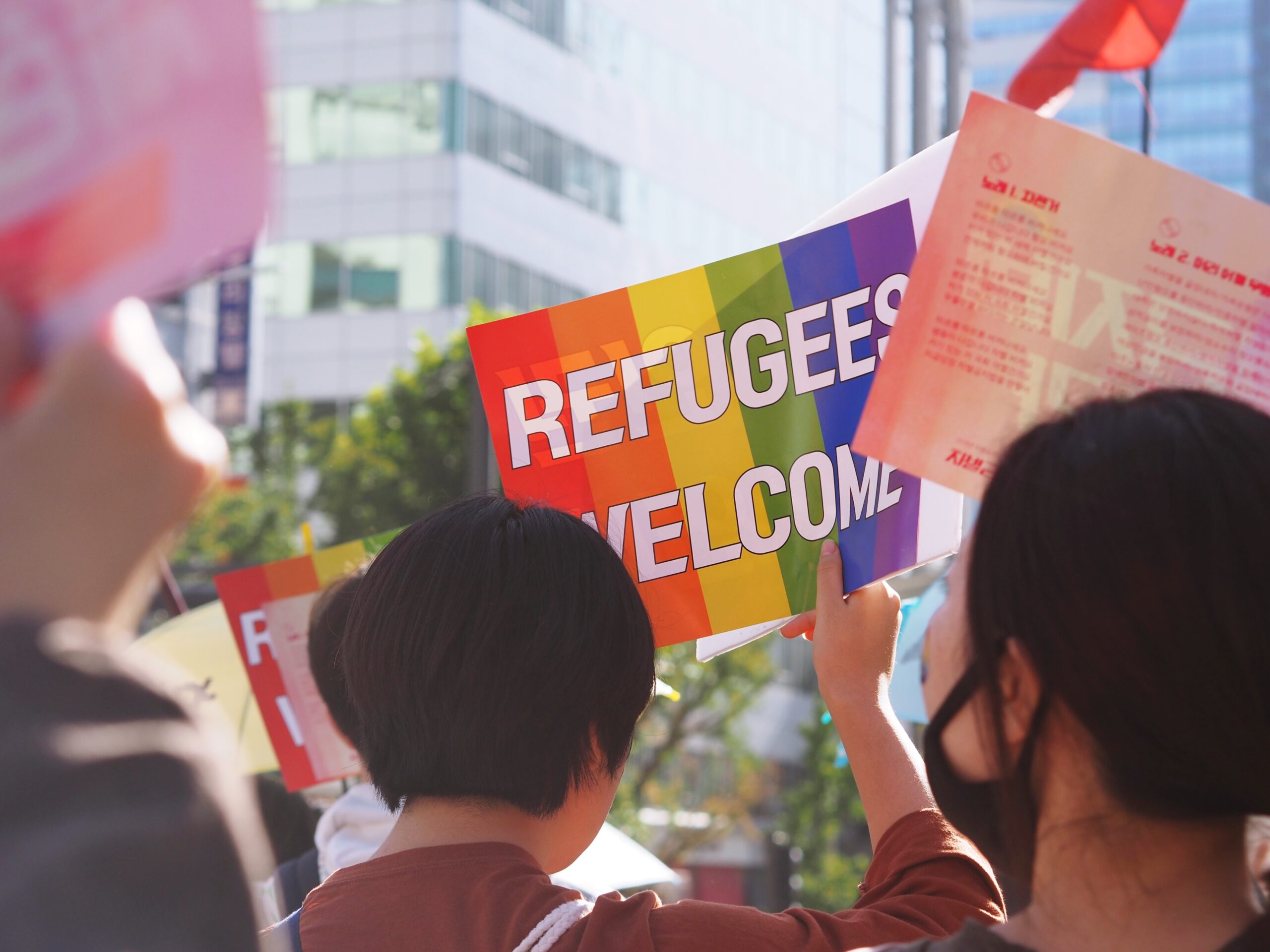Rawad, a gay man from northeast Syrian town of Raqqa, was kidnapped shortly after Islamic State insurgents invaded his hometown in 2013. They tortured him. They beat him. They handcuffed him and hung him from the ceiling. After eleven days, he escaped. Rawad fled Syria and sought refuge in Lebanon, where he has tried to pick up the pieces and start a new life.[i]
Sixty-five million people worldwide have been forced from their homes, living as internally displaced people inside or refugees outside their countries – the highest number of displaced people in the world since WWII.[ii] Yet, while all refugees are vulnerable, refugees like Rawad face particularly acute problems. According to the BBC, Rawad was targeted and tortured because he is gay.[iii] Along with the struggles all refugees endure, Rawad and millions of other LGBTQ refugees face significant additional risks due to three specific issues.
First, LGBTQ refugees face significant threats to their personal safety. From Mexico to Turkey, LGBTQ refugees report cases of discrimination, abuse, and rape, often in facilities provided by governments or aid organizations. Queer women suffer in particular from gender-based violence. In different cases, fellow refugees, host community members, or even aid workers themselves have committed these crimes.[iv]
Second, they are often live in legal limbo. Seventy-three countries criminalize same-sex relationships, including the origin countries of many refugees, such as Myanmar and the Central African Republic.[v] Yet LGBTQ refugees often cannot find asylum abroad. For example, the UK rejected 98% of asylum requests made on the basis of gender identity or sexual orientation as of 2010.[vi] Similarly, while the U.S. and Canada have historically accepted more LGBTQ refugees, both countries have increasingly refused entry to all asylum seekers, leaving many without a home and nowhere to settle.[vii]
And third, LGBTQ refugees struggle to find adequate health services. Many individual LGBTQ groups face higher risk of specific physical health concerns, such as HIV infections among men who have sex with men. More broadly, LGBTQ refugees struggle to find physical and mental healthcare with providers they trust. Many express concerns speaking with healthcare professionals, for fear that doctors or therapists will break confidentiality in countries where LGBTQ groups face persecution. These factors leave LGBTQ refugees at higher health risk, but without care they can trust.[viii]
Despite the critical need of LGBTQ refugees, the humanitarian community has failed to respond. Humanitarian actors increasingly – and rightly – address the specific needs of other particularly vulnerable groups, including pregnant women, young girls, and unaccompanied minors.[ix] Yet, humanitarian organizations have chosen not to prioritize LGBTQ groups. Whether because of lack of funding, competing interests, or other reasons, aid organizations have created a service gap that leaves millions at risk.
For a problem this large and complex, we need to think boldly. To offer healthcare at scale and tailored to LGBTQ needs, humanitarian organizations may need to train thousands of aid workers on the specific physical and mental health needs of LGBTQ groups. Recognizing the obstacles rich-world government create for LGBTQ refugees seeking asylum, humanitarians may have to launch large-scale advocacy efforts to change government policy. And to limit threats to refugees’ personal safety, organizations may need to strengthen and enforce anti-discrimination policies to protect whistleblowers and keep refugees safe.
None of this will be easy. Humanitarian organizations work across dozens of countries around the world, engaging with local governments, partnering with civil society, and employing thousands of staff. Mobilizing such a diverse and decentralized community would take time, funding, and political will. Moreover, since most humanitarian work takes place in countries that do not respect LGBTQ rights, advocates of LGBTQ refugees will face countless social and political obstacles to change.
So the humanitarian community needs to start small. Aid organizations can take a number of short-term steps to build momentum. They can design and pilot new humanitarian interventions tailored to the specific wants and needs of LGBTQ groups. They can start fundraising among interested donors to test out these new project types in different humanitarian contexts and research what works.
And most importantly, humanitarians can listen to LGBTQ refugees themselves. No matter how educated or experienced an aid worker may be, LGBTQ refugees will always better understand, better prioritize, and better advocate for their own needs. As humanitarians seek to serve LGBTQ refugees, one of the most impactful actions we can take is to empower them and raise their voices. Because in the end, this is not about what humanitarians can do.
It is about people like Rawad.
References:
[i] “Syria crisis: What is it like to be a gay refugee?” BBC News, 2014, Beirut, Lebanon. https://www.bbc.com/news/av/world-middle-east-29789498/syria-crisis-what-is-it-like-to-be-a-gay-refugee. Accessed on February 26, 2019.
[ii] “Figures at a Glance.” UNHCR: The UN Refugee Agency, 2018, Geneva, Switzerland. http://www.unhcr.org/en-us/figures-at-a-glance.html. Accessed on November 11, 2018.
[iii] “Syria crisis: What is it like to be a gay refugee?” BBC News, 2014, Beirut, Lebanon. https://www.bbc.com/news/av/world-middle-east-29789498/syria-crisis-what-is-it-like-to-be-a-gay-refugee. Accessed on February 26, 2019.
[iv] Zappulla, Antonio. “Forgotten twice: the untold story of LGBT refugees.” World Economic Forum, 2018, Geneva, Switzerland. https://www.weforum.org/agenda/2018/01/forgotten-twice-lgbt-refugees/. Accessed on February 10, 2019.; Meaker, Morgan. “How can humanitarian actors protect LGBT refugees?” Devex, 2016, Germany. https://www.devex.com/news/how-can-humanitarian-actors-protect-lgbt-refugees-88554. Accessed on February 10, 2019.; Gessen, Masha. “The L.G.B.T. Refugees in Turkey Who Refuse to Be Forgotten.” The New Yorker, 2018, New York. https://www-newyorker-com.ezp-prod1.hul.harvard.edu/news/our-columnists/the-lgbt-refugees-in-turkey-who-refuse-to-be-forgotten. Accessed on February 10, 2019.
[v] Hutt, Rosamond. “This is the state of LGBTI rights around the world in 2018.” World Economic Forum, 2018, Geneva, Switzerland. https://www.weforum.org/agenda/2018/06/lgbti-rights-around-the-world-in-2018/. Accessed on February 10, 2019.
[vi] Zappulla, Antonio. “Forgotten twice: the untold story of LGBT refugees.” World Economic Forum, 2018, Geneva, Switzerland. https://www.weforum.org/agenda/2018/01/forgotten-twice-lgbt-refugees/. Accessed on February 10, 2019.
[vii] Gessen, Masha. “The L.G.B.T. Refugees in Turkey Who Refuse to Be Forgotten.” The New Yorker, 2018, New York. https://www-newyorker-com.ezp-prod1.hul.harvard.edu/news/our-columnists/the-lgbt-refugees-in-turkey-who-refuse-to-be-forgotten. Accessed on February 10, 2019.
[viii] “Rainbow Response.” Rainbow Welcome Initiative, 2012, Chicago. https://www.rainbowwelcome.org/uploads/pdfs/Rainbow%20Response_Heartland%20Alliance%20Field%20Manual.pdf. Accessed on February 10, 2019.
[ix] Zappulla, Antonio. “Forgotten twice: the untold story of LGBT refugees.” World Economic Forum, 2018, Geneva, Switzerland. https://www.weforum.org/agenda/2018/01/forgotten-twice-lgbt-refugees/. Accessed on February 10, 2019.
